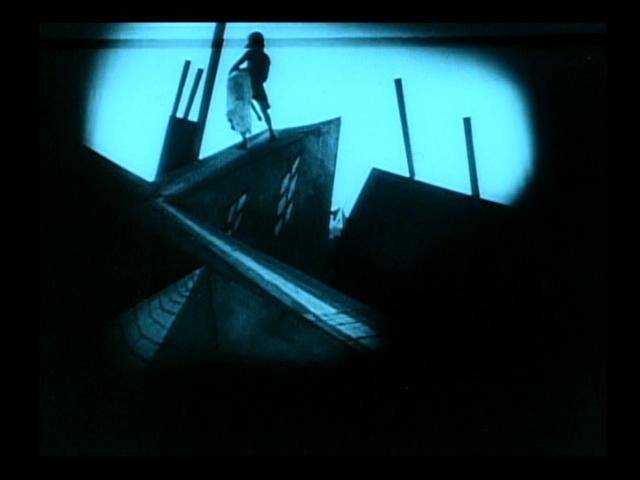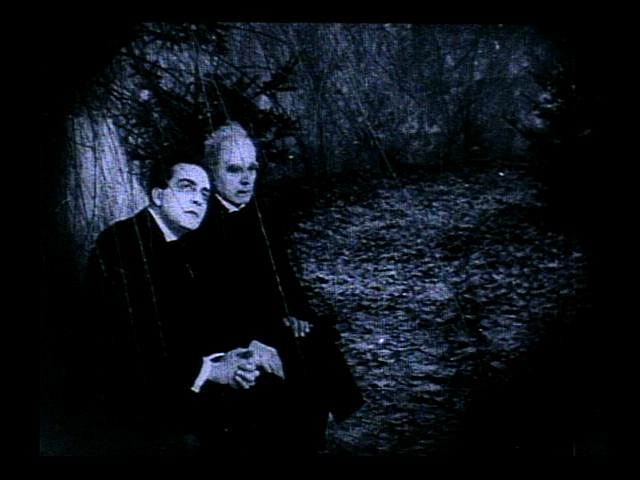


The film depicts Francis’ insanity, and does so through the representation of his subconscious reality. It evokes unrest in the audience through its haunting imagery. The sets, composition and lighting illustrate a dystopic representation of reality. The sets themselves are a complex collage of jagged, sharp pointed forms, reminiscent of the gothic style. Their arrangement delineate a very abrupt yet cyclical movement. The lighting of the sets is a style known as chiaroscuro. This method is typically found in late 17th and 18th century paintings. The term is usually applied to bold contrasts affecting a whole composition. In ‘The Cabinet of Dr. Caligari’ the method coupled with the jagged theatre set creates an omniscient and disjointed environment. There is also a discontinuity in the movement of the actors within the strategically lit environment. The majority of the dream sequence depicted in the move is very much a collage of lighting effects, movement and sets. All when combined create a complete environment, but one which is very sporadic.
The beginning and end of the movie, Francis is amongst a pictorial environment, describing his delusions to his friend. The environment in these two scenes is a conventional composition of both a park and a courtyard. The dream sequence when contrasted with the beginning and ending of the movie can be considered as a “transformation of material objects into emotional ornaments” as explained by the movie’s set designer, German Expressionist artist, Hermann Warm.